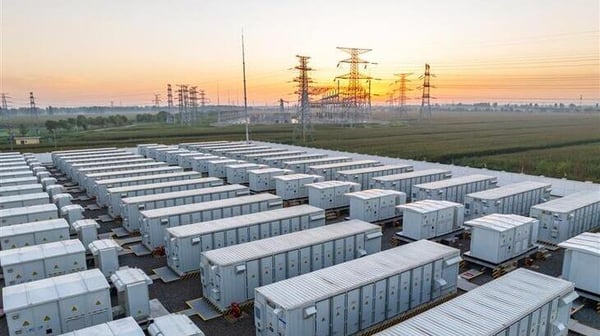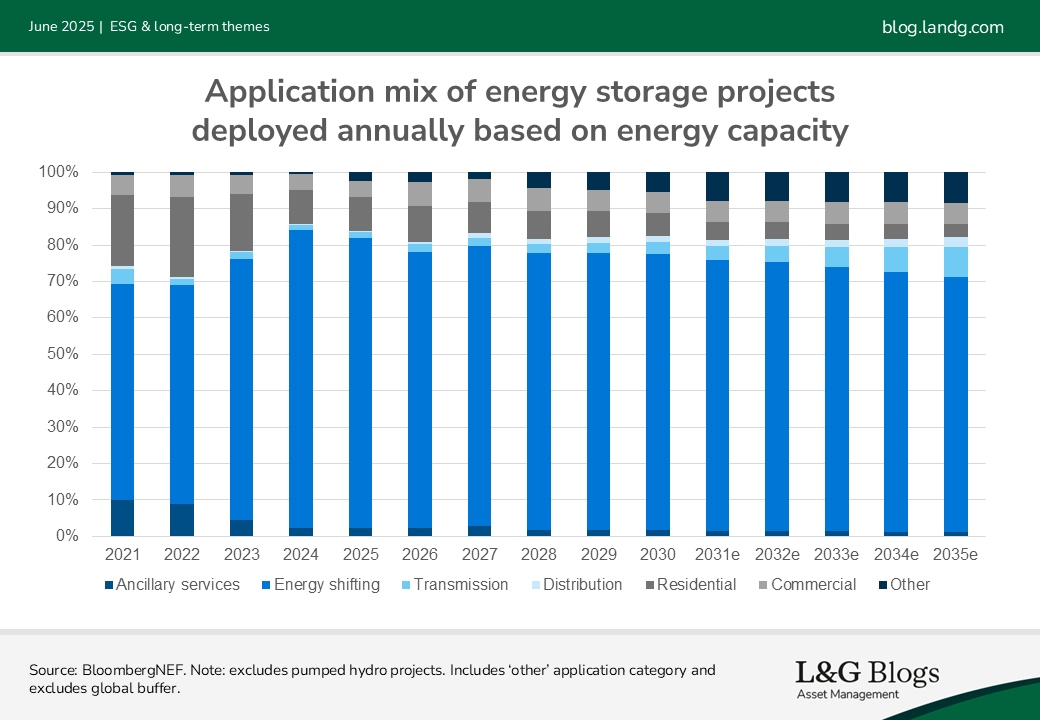Disclaimer: Views in this blog do not promote, and are not directly connected to any L&G product or service. Views are from a range of L&G investment professionals, may be specific to an author’s particular investment region or desk, and do not necessarily reflect the views of L&G. For investment professionals only.
When the lights went out: Spain’s blackout and the future of energy resilience
The power cut highlighted that renewables may leave energy networks vulnerable to grid disruption, and the critical role of battery storage and smart grids in mitigating outages.

On 28 April 2025, a major power outage hit Spain, Portugal and parts of southwest France. It was one of the most serious blackouts in Europe in recent years, with the power cut lasting up to 10 hours in some areas. Transport, telecoms and emergency services were all severely disrupted.
While the exact cause of the blackout is still under investigation, experts believe a lack of stabilising energy in the grid may have played a role in the system’s collapse.[1]
At the time of the blackout, more than half of Spain’s electricity was coming from renewables[2], with very little support from gas or nuclear. Traditional power plants use large spinning turbines, which naturally store kinetic energy. This acts like a buffer: if something disrupts the grid, the turbines keep spinning for a short while, giving the system time to respond and stabilise.
Renewables such as wind and solar don’t provide this stabilising force, making a grid that relies heavily on renewables less resistant to disruption. When a major fault occurs, the system may not be able to recover quickly enough, leading to a chain of failures.
Battery backup
Normally, grid operators have tools to manage these situations, including back-up reserves and fast-response systems. One of the most promising technologies is battery energy storage systems (BESS), which can react almost instantly. But Spain has little BESS capacity to offer, with 60MW, significantly less than the UK (5.6GW) and Italy (1GW).[3]
As the proportion of electricity generated by renewables in Europe continues to rise[4], energy security will increasingly depend on grid resilience rather than generation capacity. The recent blackout underscores the growing need for grid flexibility, large-scale energy storage and smart infrastructure.
We believe this will drive long-term investment in grid modernisation and utility-scale battery systems.
Powering the transition: The rise of utility-scale energy storage
Global energy storage deployments reached 74 GW in 2024, nearly doubling in energy capacity compared with 2023. BNEF projects a new record in 2025, with 94 GW of additions, followed by a compound annual growth rate (CAGR) of 14.7%, bringing annual installations to 220 GW by 2035. The utility-scale segment remains the primary driver of global energy storage growth throughout the forecast period, with gigawatt-hour-scale projects either operational or under development across every continent.
Energy shifting – which refers to capacity built for renewable integration, power price arbitrage and/or providing reliable capacity to meet peak system demand[5] – remains the leading application for energy storage. In 2024, strong utility-scale growth in China and emerging European markets such as Italy pushed energy shifting’s share of installed capacity to a record high.

A growing number of companies are actively offering energy storage and grid integration solutions. For instance, ABB Ltd* has introduced its Battery Energy Storage Systems-as-a-Service, designed to simplify the adoption of renewable energy.
Similarly, Siemens Energy’s* Qstor™ provides an end-to-end solution for battery energy storage, featuring a holistic control system that enables real-time monitoring, precise temperature regulation, and continuous battery health management.
Smarter energy: The future of grid modernisation
Smart energy is transforming the power sector by integrating digital innovation across the entire energy value chain. From generation to consumption, advanced technologies are being deployed to enhance efficiency, reliability and sustainability.
At the heart of this transformation is the smart grid, a modernised electrical network that uses digital tools to monitor, manage and optimise energy flows in real time. Unlike traditional grids, smart grids support two-way communication between utilities and consumers, enabling dynamic energy management and more responsive service delivery.
Smart energy has seen significant growth over the past few years, driven by investments made by utilities and technology providers. Below are some of the key drivers:
- Grid modernisation: Modernising existing grid infrastructure is crucial to enable better management of electricity flow, reduce losses, and improve the reliability and resilience of power systems
- Renewable integration: The increasing integration of renewable energy sources is driving demand for smart energy solutions that can effectively manage variability in power generation and maintain grid stability
- Energy efficiency management: Demand-side management enables real-time monitoring and control of energy usage, promoting more efficient consumption and delivering cost savings for end users
The smart energy market is estimated to be worth $177.71 billion in 2024 and is expected to reach $357.50 billion by 2031, growing at a compound annual growth rate (CAGR) of 10.5% from 2024 to 2031.[6]
As the global energy landscape shifts toward decarbonisation, energy storage and smart energy technologies are emerging as essential pillars of the modern power system. The blackout in Spain served as a stark reminder that energy security now hinges on grid resilience.
This underlines the long-term growth potential of utility-scale storage, digital infrastructure and grid modernisation given the critical role of these technologies in enabling a stable, sustainable energy future.
*For illustrative purposes only. Reference to a particular security is on a historic basis and does not mean that the security is currently held or will be held within an L&G portfolio. The above information does not constitute a recommendation to buy or sell any security.
[2] https://windeurope.org/newsroom/news/iberian-peninsula-blackout-proves-the-need-for-grid-resilience/
[4] Share of energy consumption from renewable sources in Europe | European Environment Agency's home page
[5] Definition from BloombergNEF
Recommended content for you
Learn more about our business
We are one of the world's largest asset managers, with capabilities across asset classes to meet our clients' objectives and a longstanding commitment to responsible investing.

